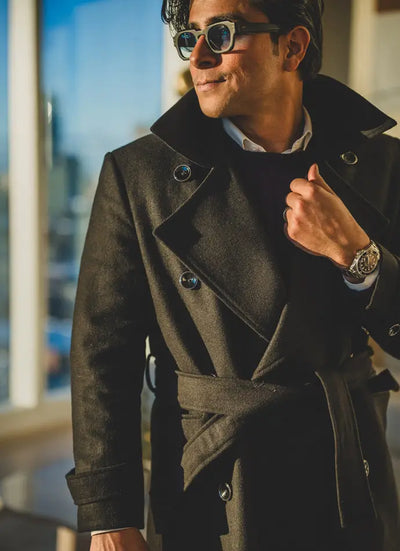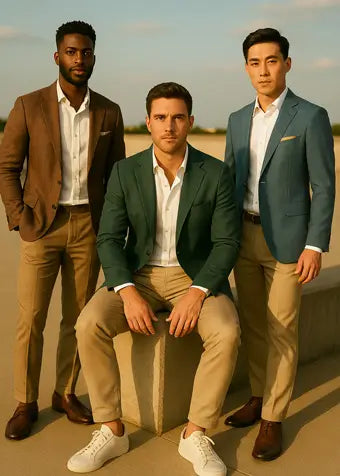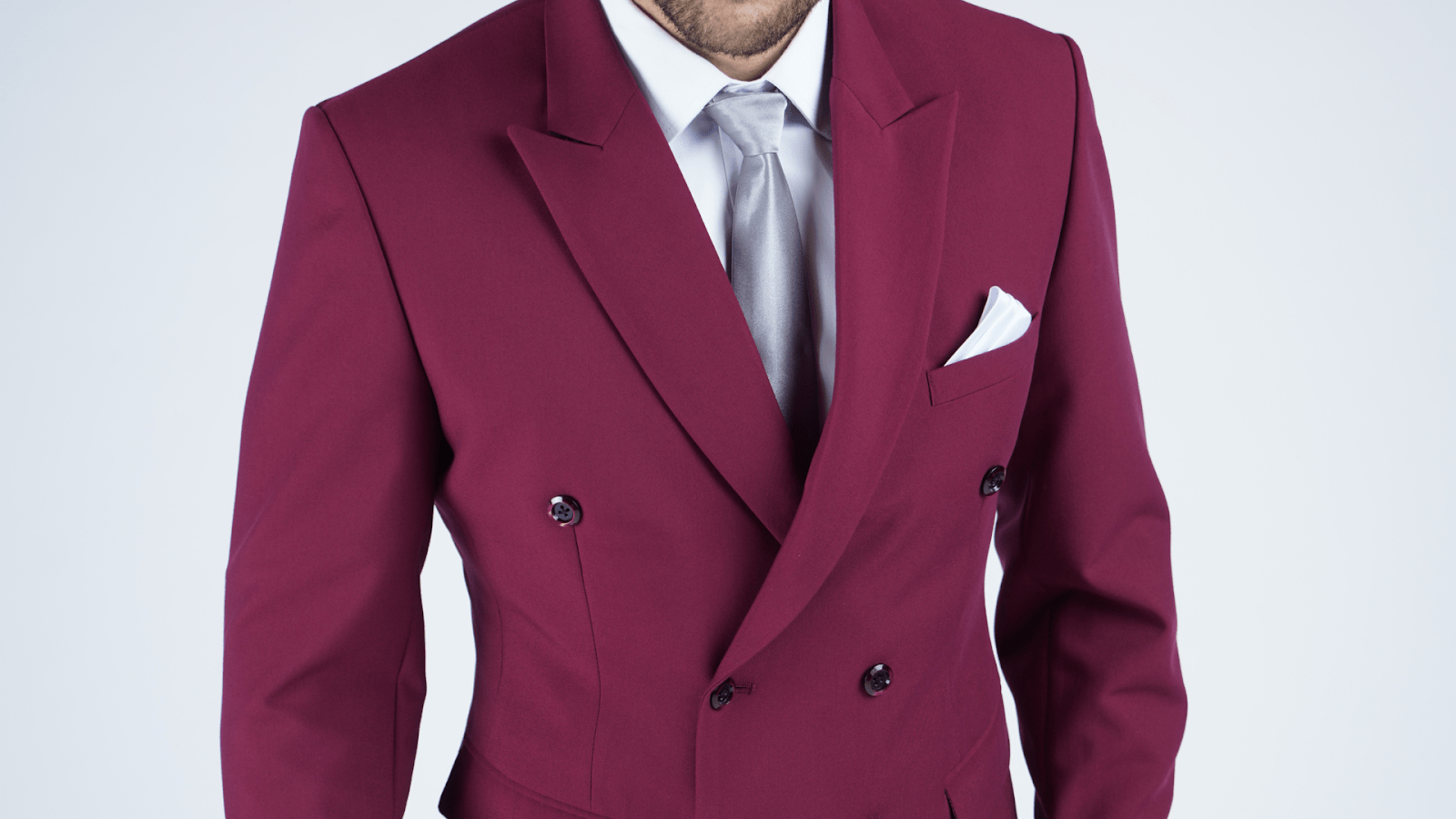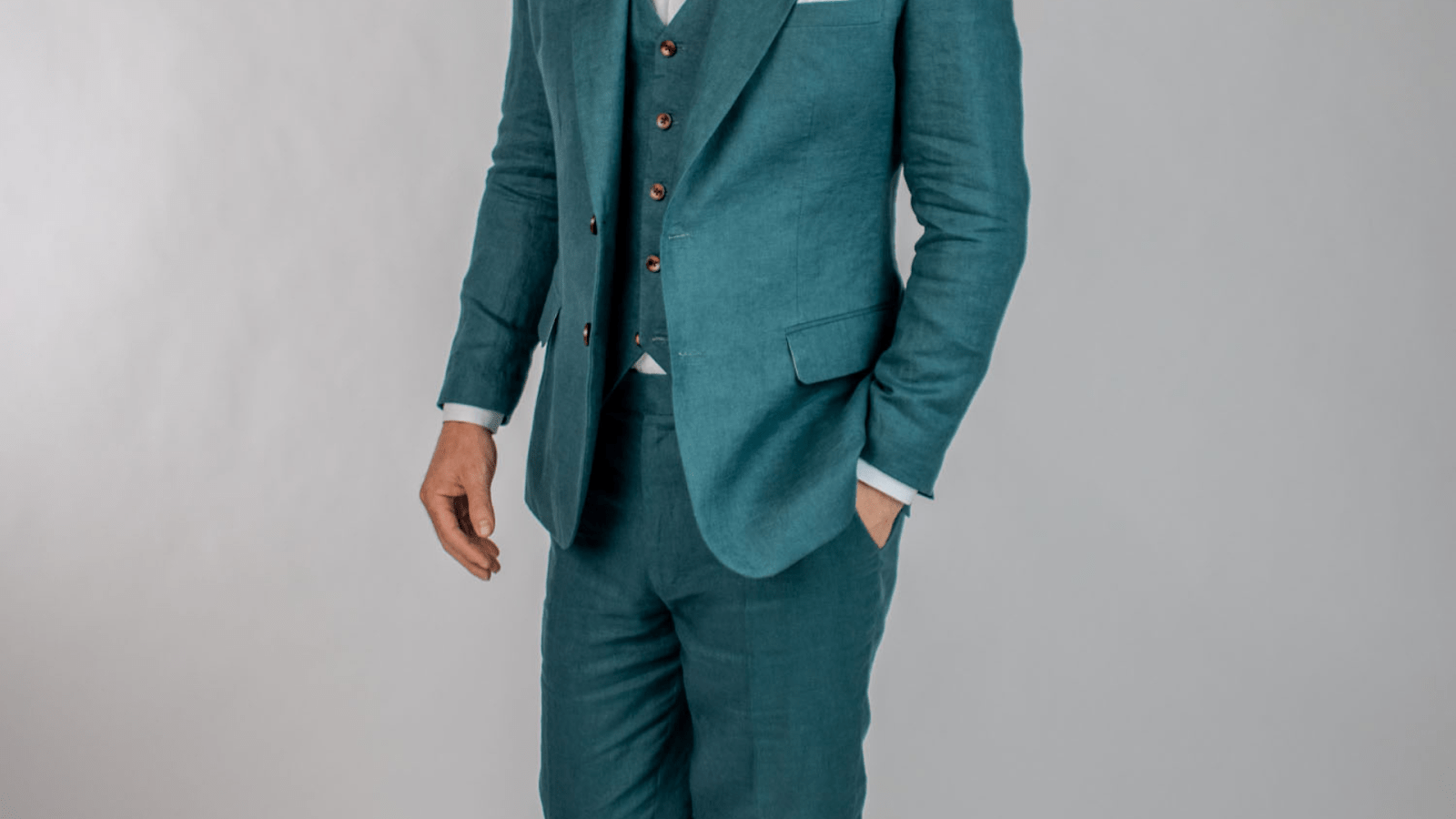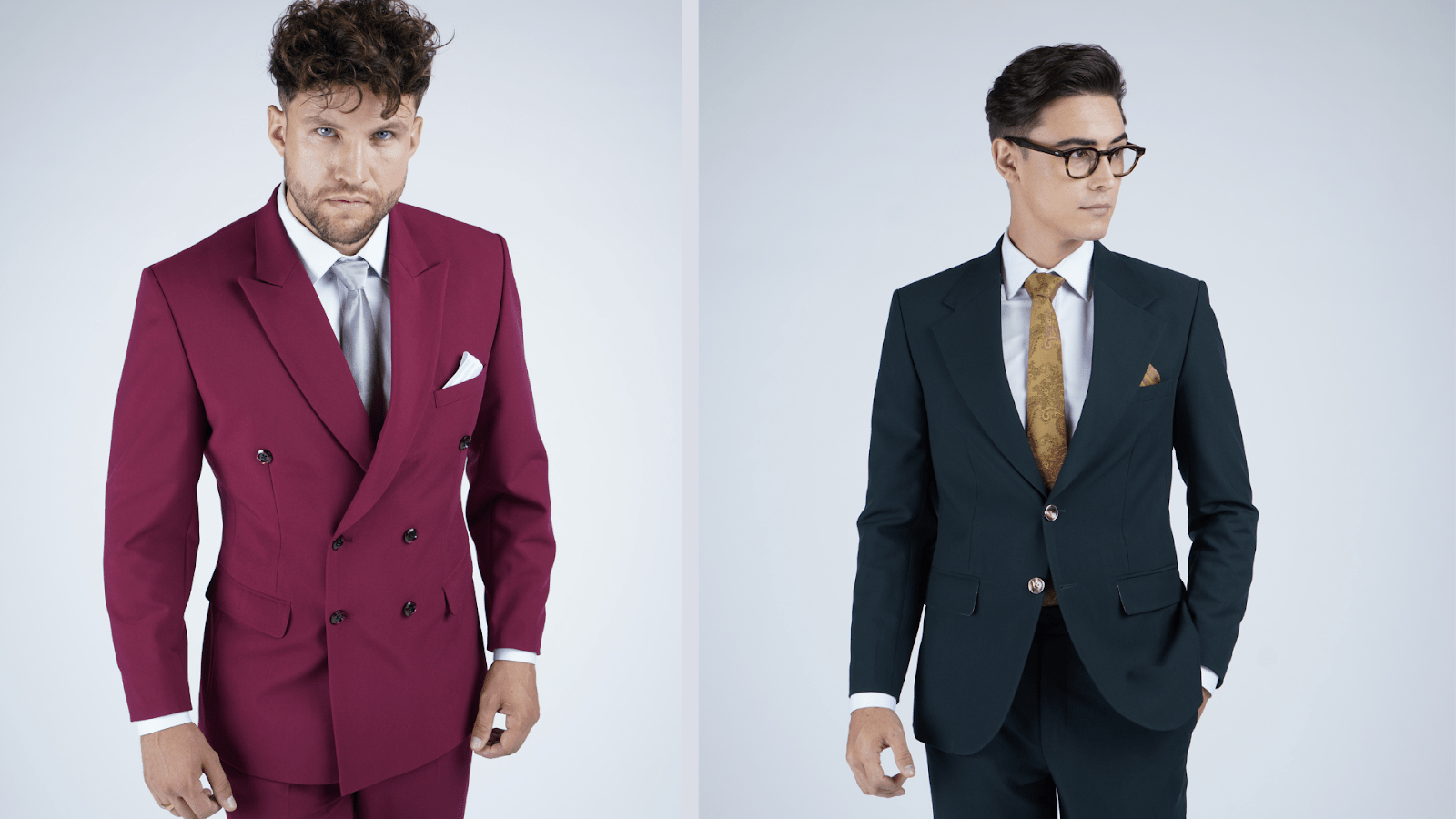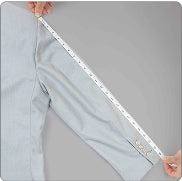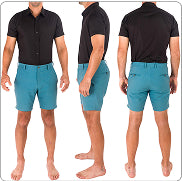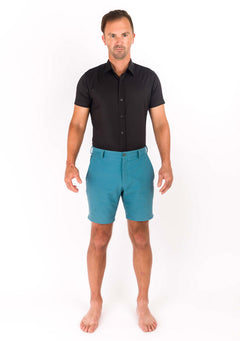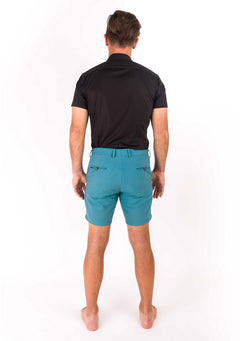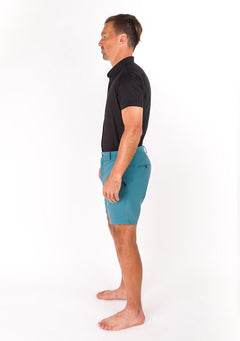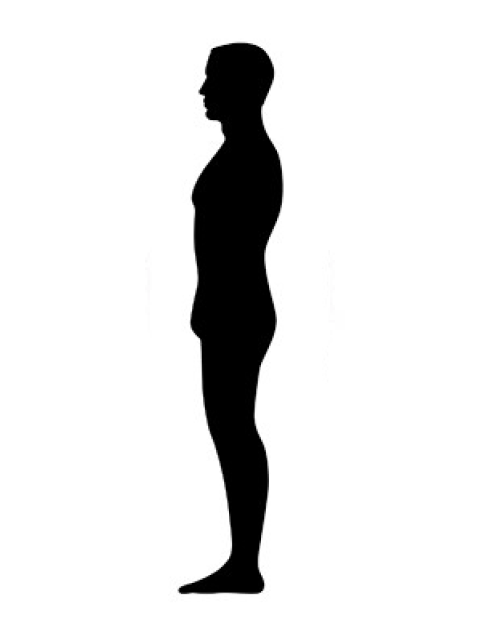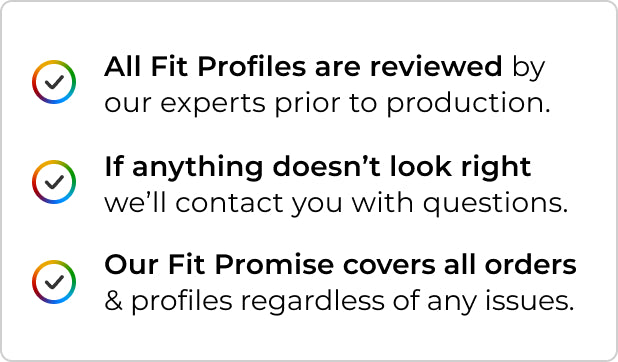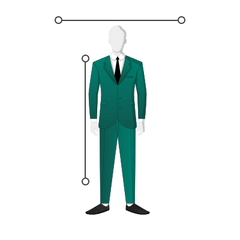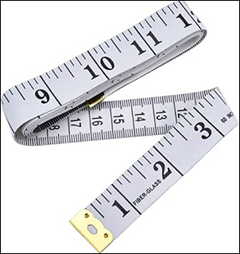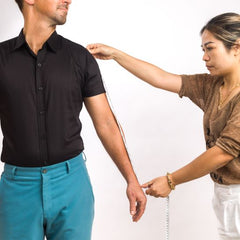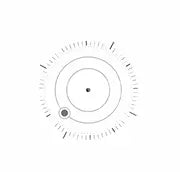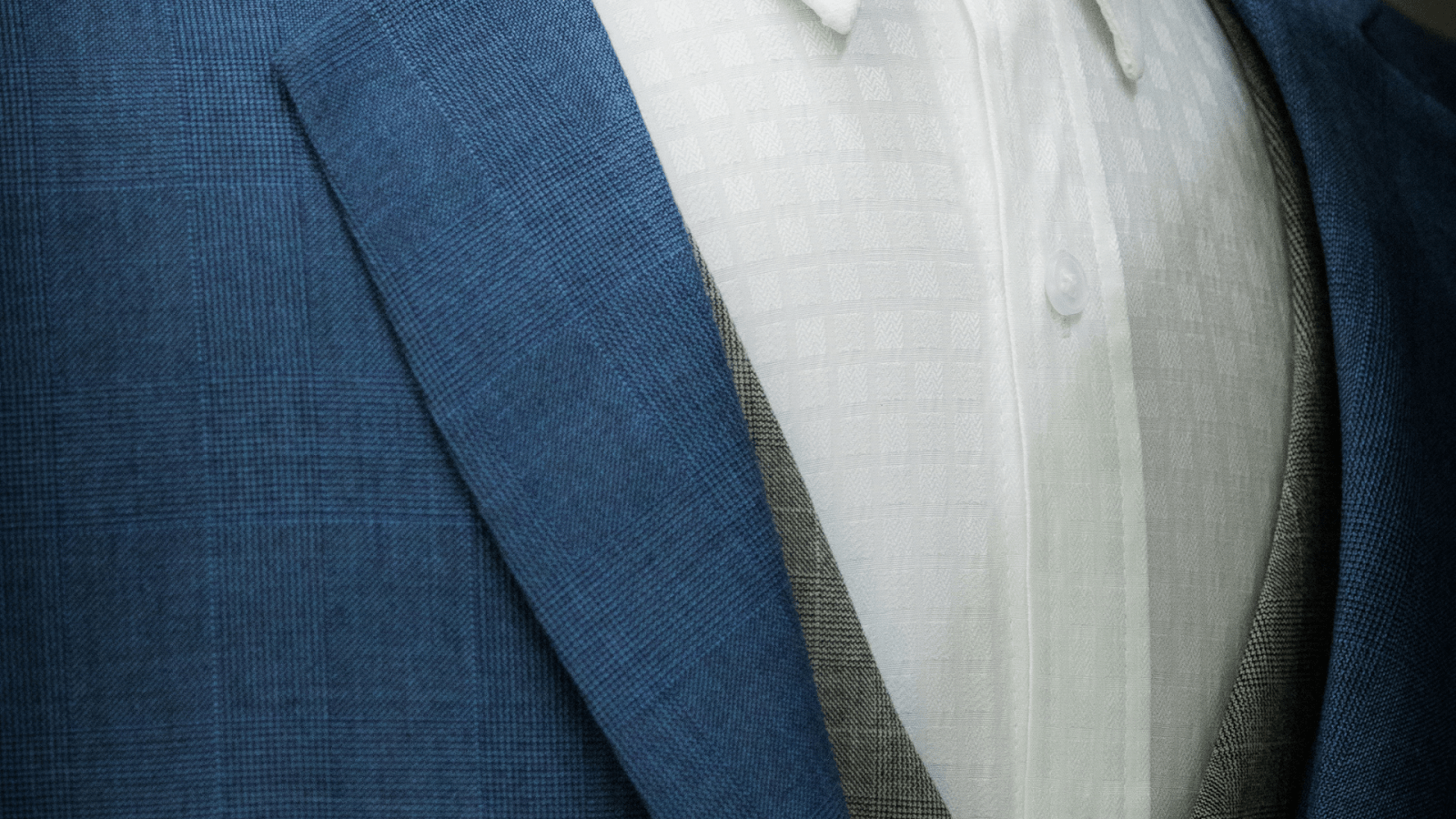
How A Perfect Suit Should Actually Fit
Contents
- Why Tailoring A Suit Makes All The Difference
- The Key Elements Of Tailoring A Suit: What To Know
- How Should A Suit Fit Across Your Shoulders?
- Tailoring A Suit: Getting The Perfect Chest And Waist Fit
- The Right Jacket Length And Sleeve Fit: A Perfect Match
- Pants Fit: How Tailoring A Suit Elevates Your Look
- Tailoring A Suit To Your Body Shape: A Personalized Fit
- Final Thoughts
- Frequently Asked Questions About How A Perfect Suit Should Actually Fit
Key Takeaways:
- Tailoring Enhances Fit and Comfort: A well-tailored suit enhances your body’s natural lines, ensuring both comfort and confidence.
- Custom Fit for Every Body Type: Tailoring addresses individual body shapes, providing a flattering silhouette whether you have an athletic, slim, or broader physique.
- Attention to Detail Elevates Style: Every detail in a tailored suit contributes to a polished, sophisticated look from sleeve length to lapel style.
Ever felt like your suit was almost right, but something just felt… off? Maybe the shoulders were too tight, or the sleeves didn’t sit quite right. It’s frustrating when you know the potential exists, but the fit isn’t perfect. The difference between a good suit and a great suit isn’t just about the fabric or the brand—it’s all about the fit. A well-tailored suit doesn’t just look good; it makes you feel confident, comfortable, and ready for anything.
At Sartoro, we believe in more than just measurements. Tailoring a suit should be an art, taking into account your unique body shape, personal style, and lifestyle. Whether stepping into a boardroom or out for a night in the city, the perfect fit should give you that effortless cool, like it was made just for you. Let’s break down exactly what makes a suit fit perfectly, and why it’s worth investing in the right one.
Why Tailoring A Suit Makes All The Difference
A suit that fits well doesn’t just enhance your appearance—it changes how you carry yourself. When a suit is tailored to your specific body shape, it moves with you and flatters your figure in all the right ways. The difference between a store-bought suit and a custom-tailored one is undeniable: comfort, confidence, and a polished look. But why exactly does tailoring a suit make all the difference? Let’s break it down:
A Custom Fit Enhances Your Shape
Off-the-rack suits are designed to fit an “average” body, which rarely matches anyone perfectly. Tailoring a suit allows the fabric to hug your shoulders, chest, and waist to complement your unique build. Whether broad-shouldered or slimmer, a tailored suit is adjusted to highlight your best features and create a flattering silhouette.
Comfort And Mobility
The perfect suit isn’t just about looking good—it’s about feeling good too. When a suit is tailored, it’s crafted to fit comfortably, allowing you to move naturally. From arm flexibility to leg movement, a well-fitted suit ensures you won’t be restricted during your day.
Proper Proportions Make You Look Taller And Leaner
A suit that fits correctly gives you the illusion of a taller, leaner frame. Custom tailoring helps avoid common issues like excess fabric or overly tight areas, allowing your proportions to be balanced. This is especially important when dealing with suit lengths—jacket and pants—that can make or break your overall look.
Attention To Detail Elevates Your Style
When tailoring a suit, every detail is considered. From the length of the sleeves to the break of the pants, every inch is measured to suit your body. These small adjustments ensure that your suit doesn’t just fit—you look effortlessly put together. These details add sophistication and confidence, showing you’ve invested in your style.
The Key Elements Of Tailoring A Suit: What To Know
A perfectly tailored suit highlights the elegance of traditional craftsmanship while ensuring that the garment drapes in harmony with the body’s natural lines. To achieve such seamless perfection, several critical elements must be meticulously considered.
Fabric Choice
The journey of the perfect suit begins with the selection of fabric. The choice dictates the visual appeal and the suit's functionality. From the luxurious luster of wool to the breathable charm of linen, each fabric presents unique characteristics that influence how the suit feels and behaves throughout the day. Consideration of fabric weight and composition is essential in blending comfort with sophistication. Opting for high-quality materials ensures the suit maintains its structure and appearance over time.
Fit And Measurement
Precision in measurement is the cornerstone of effective tailoring. Standard sizes may inadequately capture the nuances of individual body shapes; thus, accuracy in tailoring extends beyond numbers to encompass personal contour. The shoulder, chest, waist, and inseam demand precise alignment to create a custom silhouette that complements one's stature.
Structure And Construction
The internal architecture of a suit significantly influences its final appearance and functionality. Factors such as canvas construction versus fuse and the type of lining bear heavily on its feel and form. Tailored suits are often built with a full or half canvas, providing flexibility while preserving shape integrity.
Detailing And Customization
No tailored suit is complete without the bespoke elements that distinguish it from the ordinary. Details such as lapel style, pocket configuration, and button variations allow for a personalized expression of style.
Customization transcends aesthetics to address functional preferences—from additional pockets to specific vent choices—ensuring that every component aligns with the wearer’s lifestyle and sartorial requirements.
How Should A Suit Fit Across Your Shoulders?
A well-fitted suit is a hallmark of sophistication, and it all starts with the shoulders. When tailoring a suit, the fit across the shoulders is critical; it sets the foundation for the jacket’s overall silhouette. Let's delve into the nuances of a flawless shoulder fit.
The Seam And Sleeve Connection
The shoulder seam should end exactly where your shoulder does, aligning with the natural curve of your shoulders. Ill-fitted seams, whether too forward or backward, can distort the jacket’s balance and lead to an awkward appearance. The sleeves must drop directly from the seam without stress or bunching, ensuring a sleek and clean look.
Achieving The Perfect Balance
A properly balanced shoulder fit complements your posture and ensures comfort. Too broad, and the jacket gives an overwhelming impression; too narrow, and it restricts movement. The suit should enhance your natural physique, maintaining an effortless elegance without compromising comfort.
The Role Of Padding
Padding is a crucial element that influences a suit's shoulder fit. While minimalist padding provides a more natural shape, a structured shoulder can offer a commanding presence. Your choice may depend on personal style preferences or traditional tailoring methods. The goal remains the same: to present a refined and polished look that flatters your body.
Tailoring A Suit: Getting The Perfect Chest And Waist Fit
Ensuring a sharp, refined silhouette in a suit demands an impeccable fit in the chest and waist areas. These elements are the bedrock of a suit's structure, contributing decisively to its overall aesthetic and functional sophistication. When correctly tailored, they augment one's physique and exemplify a distinguished presentation. Here are pivotal considerations to achieve sartorial excellence:
Achieving The Ideal Chest Fit
A proper chest fit is crucial for freedom of movement and comfort without compromising elegance. When a suit is tailored to fit well in this area, it should lie smoothly across the chest and shoulders without wrinkling or tugging. For the optimum chest fit:
- Garment Drape: Ensure the fabric drapes naturally when the jacket is buttoned. Any pulling or gaping at the buttons denotes a need for adjustment.
- Lapels Alignment: The lapels should comfortably hug the chest and seamlessly transition down to the waist, creating a sleek visual continuity.
- Arm Mobility: Extend your arms to test the range of movement. While the suit should contour your body, it should not feel constricting or impede natural motion.
Perfecting The Waist Fit
The waist is another critical area where a bespoke fit can significantly enhance the suit’s overall appearance and functionality. A well-tailored waist exudes classic elegance and ensures a streamlined profile:
- Tapering Precision: The jacket should nip in at the waist, accentuating a defined V-shape without adhering too snugly or creating unsightly fabric tension.
- Natural Contour: The waist transitions should complement your body's natural lines, maintaining symmetry and polished aesthetics.
- Comfortable Closure: When buttoned, the suit should feel secure but not tight, allowing for effortless ease in movement and an unbroken silhouette when standing or seated.
The Right Jacket Length And Sleeve Fit: A Perfect Match
When it comes to tailoring a suit, the nuances of fit often define the line between ordinary and extraordinary. Attention to these details ensures that a suit complements your body seamlessly, achieving a look of elegance and precision.
Getting The Jacket Length Just Right
The length of a jacket plays a crucial role in defining your silhouette. Ideally, a suit jacket should be long enough to cover the curvature of the buttocks while allowing the hem to line up neatly with your knuckles when your arms hang naturally at your sides.
This balance ensures the jacket is neither too short, resulting in a truncated appearance, nor too long, which can swamp your frame. A properly fitted jacket length accentuates your form, providing the foundation of a perfectly tailored suit.
Perfecting Sleeve Length
Getting the sleeve length right is imperative for a sophisticated aesthetic. Generally, suit sleeves should fall where the base of your thumb meets your wrist, allowing about half an inch of your dress shirt cuff to be visible.
This subtle exposure creates a clean, polished line that complements the ensemble's overall composition. The perfect sleeve length achieves harmony between jacket and shirt, accentuating craftsmanship and style without overpowering either element.
Pants Fit: How Tailoring A Suit Elevates Your Look
A tailored fit ensures your pants complement the jacket and enhance your overall look. The perfect pair of suit pants should fit comfortably, move with you, and give your silhouette a clean, sharp appearance. Here’s why getting your suit pants tailored can truly elevate your style:
The Waistband: Tailored Just for You
A precisely fitted waistband is the foundation of well-tailored pants. It should sit comfortably around your waist, neither too tight nor loosely sagging, ensuring an impeccable silhouette. This delicate balance permits ease of movement while maintaining a sharp, polished appearance.
The sleek, uninterrupted line created by a snug waistband pays homage to the mastery of tailoring. It allows the remaining details of the trousers to cascade naturally, revealing an unfettered, sophisticated profile.
Perfecting The Rise: Balancing Comfort And Elegance
The rise of your pants—the distance from the waistband to the crotch—profoundly impacts your overall look. Tailored to align with your body’s natural proportions, the rise should neither bunch nor pull.
A well-tailored rise balances comfort with aesthetic grace, ensuring that when you tuck in a shirt, it enhances your frame rather than disrupting the flow. Fine tailoring ensures this measurement is bespoke, turning potential discomfort into a perfect harmony between form and function.
The Length: Where Precision Meets Style
Pants length is the crowning glory of tailored trousers. The decision between a classic break, where the fabric slightly brushes the top of the shoe, or a modern no-break style, where the hem lightly kisses the shoe, is entirely personal, yet crucial.
Tailors artfully calculate this measurement, with each pleat and crease contributing to a pants length that exemplifies elegance. This meticulous attention to detail guarantees that the trousers do not merely end at your shoe but communicate an orchestra of precision that resonates from cuff to heel.
Tailoring A Suit To Your Body Shape: A Personalized Fit
Off-the-rack suits are designed to fit a generic body type, but everyone's physique is unique. Tailoring addresses these differences, transforming a standard garment into a suit that complements your specific body shape, enhances your best features, and creates a more flattering silhouette overall.
Understanding Your Body Type
Before delving into tailoring specifics, it is essential to recognize your body type. Common categories include the athletic build, slim or lean body shapes, and broader and more robust physiques. Each body type presents distinct opportunities and challenges, guiding our approach to suit tailoring.
Tailoring For An Athletic Build
For those with an athletic build, the key highlights the body’s natural V-shape—broad shoulders tapering down to a narrow waist. A fitted suit should accentuate these features, ensuring a relaxing fit around the shoulders and chest while maintaining a trim profile through the waist. This balance provides a streamlined and sophisticated appearance without restrictive discomfort.
Slim Or Lean Body Shapes
Slim or lean physiques aim to avoid a suit looking overly loose or baggy. Tailoring should enhance your frame with a fitted jacket that mirrors your body’s lines, while properly tapered pants ensure the suit does not overwhelm your stature. Adding structured shoulders or opting for a double-breasted jacket may impart a broader appearance, lending a touch of authority to your ensemble.
Broad And Robust Physiques
Tailoring for broader physiques is all about creating a balanced silhouette. A suit should provide adequate comfort in the shoulders and chest area, gently tapering as it moves down the body. A well-designed jacket will elongate the torso, avoiding boxy shapes that can add unwanted bulk. Attention to detail, such as single vents and side adjusters, can create a harmonious and refined look.
Final Thoughts
A perfectly tailored suit isn’t just a fashion choice; it’s a statement of confidence, comfort, and personal style. Every detail matters to ensure your suit fits your unique body shape and enhances your appearance, from the shoulders to the pants. Whether you're preparing for a formal event or a day at the office, investing in proper tailoring ensures that you look great and feel great too. At Sartoro, the right fit makes all the difference, turning a good suit into a great one.
Read also:
Frequently Asked Questions About How A Perfect Suit Should Actually Fit
How long should a suit jacket be?
A suit jacket should typically cover the curvature of your buttocks and end around the middle of your hand when your arms are relaxed at your sides. This classic length ensures a balanced silhouette, offering both style and comfort.
Where should a suit jacket sleeve end in relation to the shirt cuff?
The ideal length for a suit jacket sleeve exposes about half an inch of your shirt cuff. This subtle detail adds polish to the overall look, ensuring that the proportions between your jacket and shirt remain harmonious.
How much of the shirt collar should show above the jacket collar?
A small glimpse of the shirt collar—approximately half an inch—should be visible above the jacket collar. This detail frames the neck and completes the neckline seamlessly, adding an element of sophistication to your ensemble.
How should trousers' waistline fit?
The waistband of your suit trousers should sit comfortably at your natural waist without pinching or sagging. It should be snug enough to hold the trousers in place but allow for ease of movement, reflecting precise tailoring.
What is the proper length for suit trousers?
Suit trousers should gently rest on your shoes, creating a slight break at the front. This ensures the fabric drapes elegantly, avoiding unsightly bunching or excessive length.
What are the indications of a too tight or too loose suit?
A suit that is too tight restricts movement, with visible pulling at the seams, while a suit that is too loose lacks definition, resulting in excess fabric around the arms and waist. Both extremes compromise the suit's intended fit and silhouette, underscoring the importance of precision in tailoring.






















